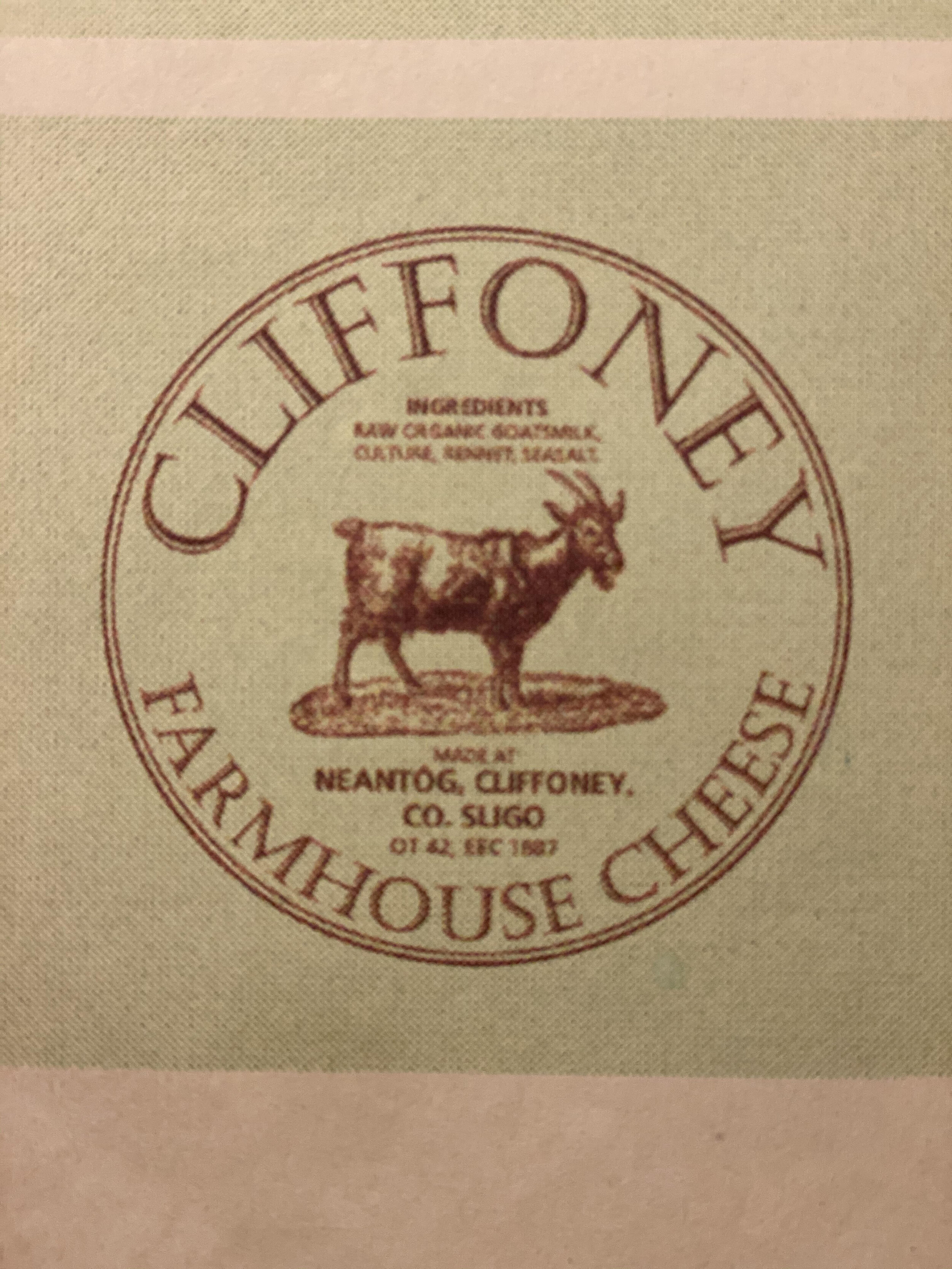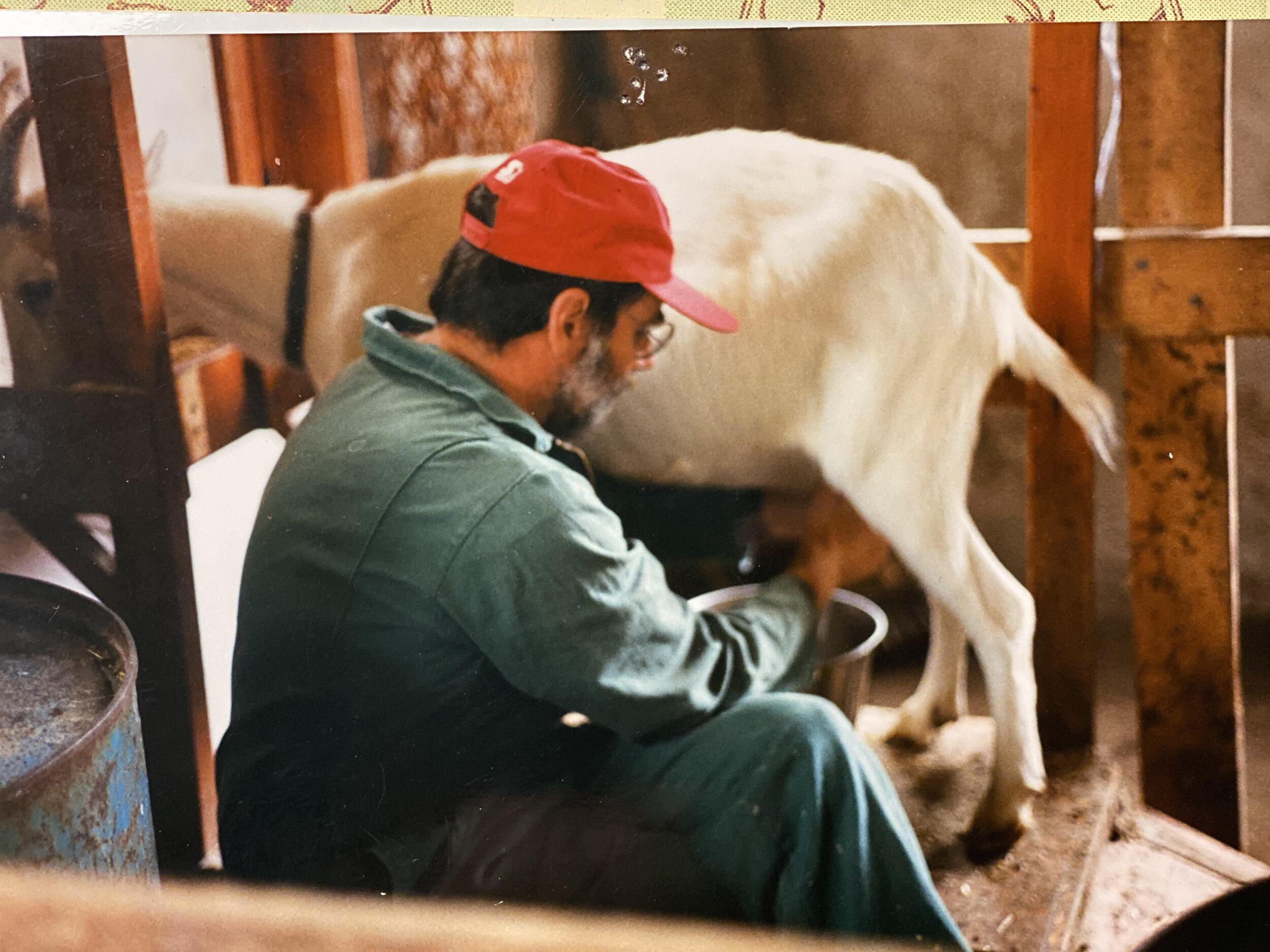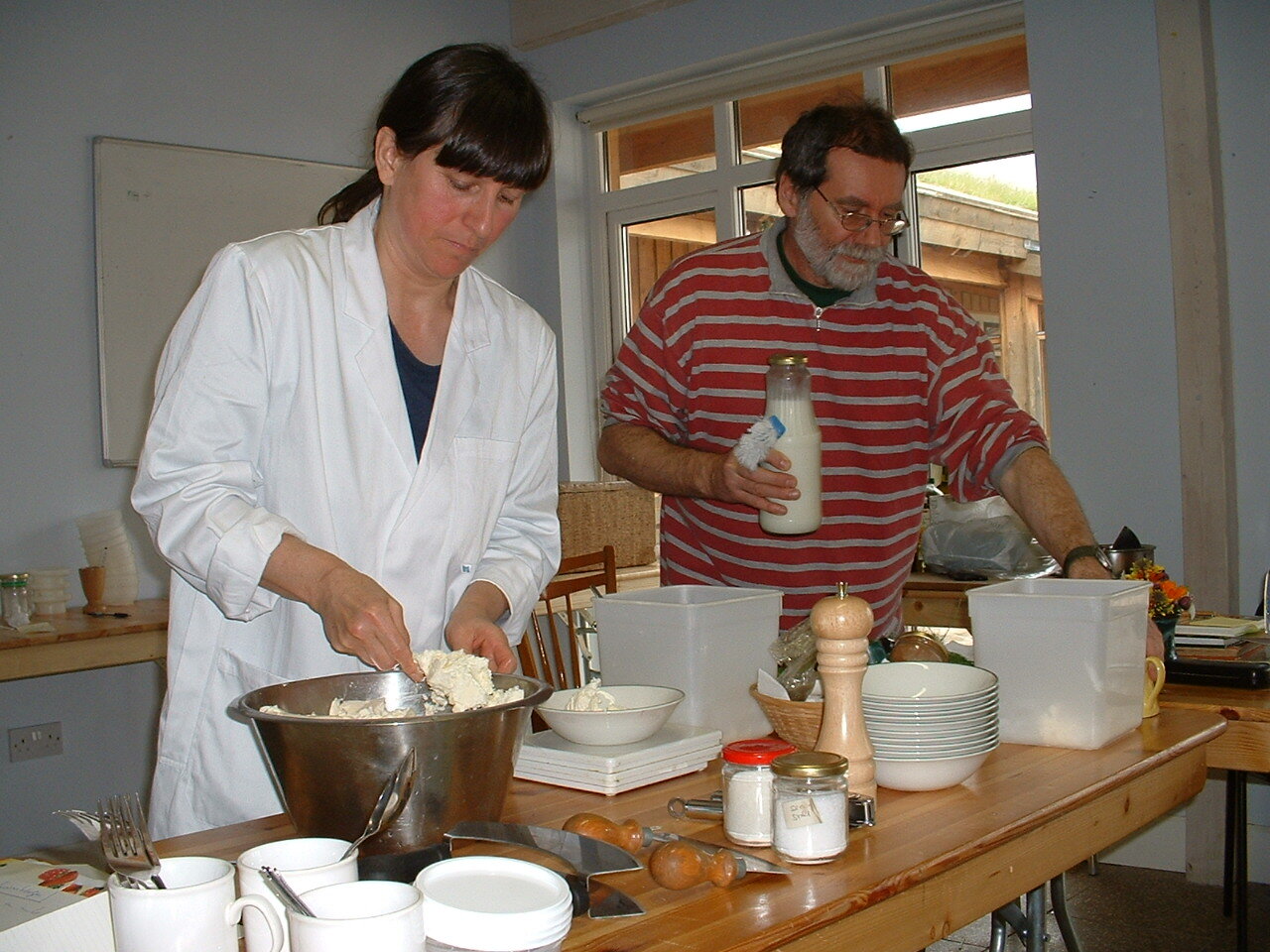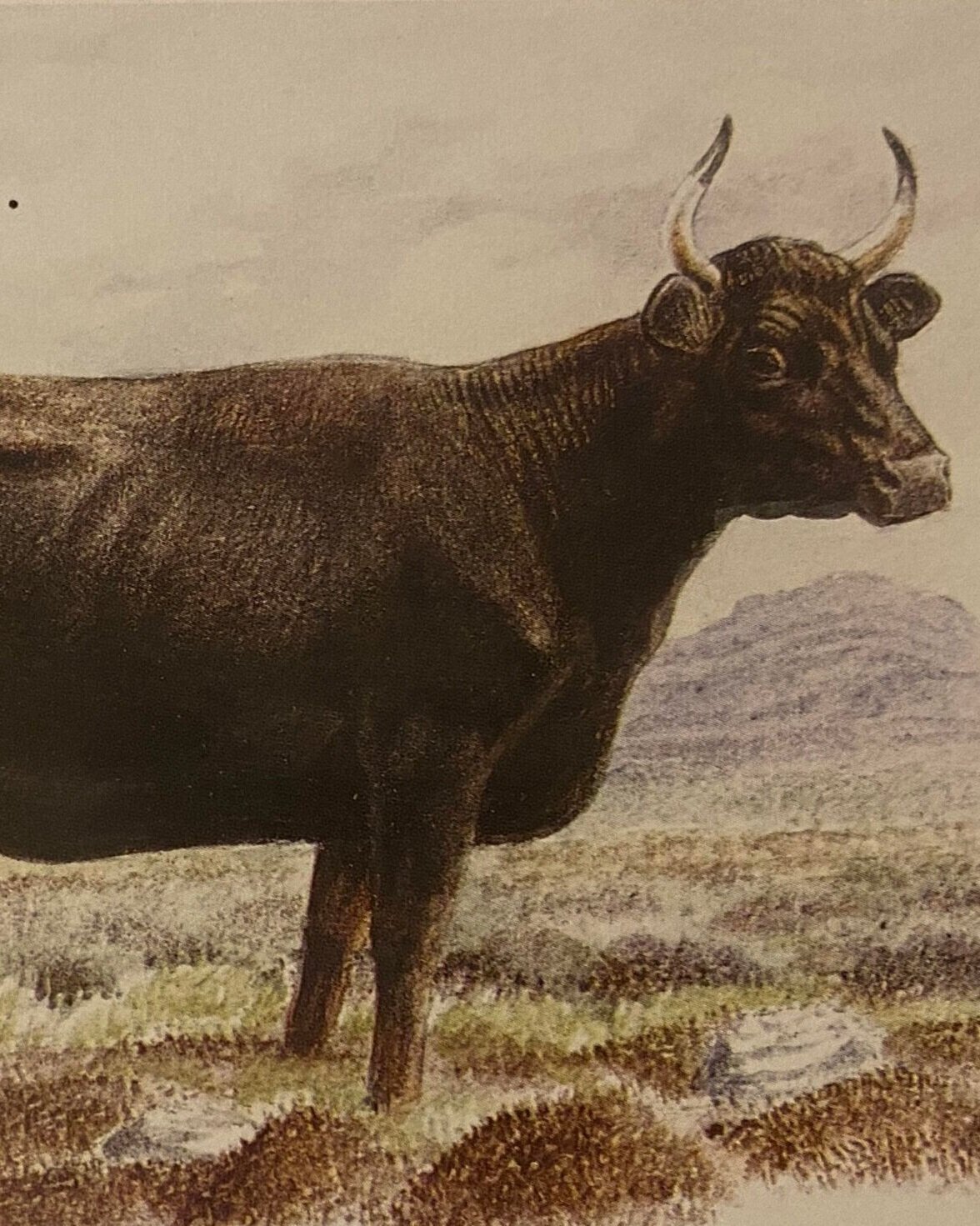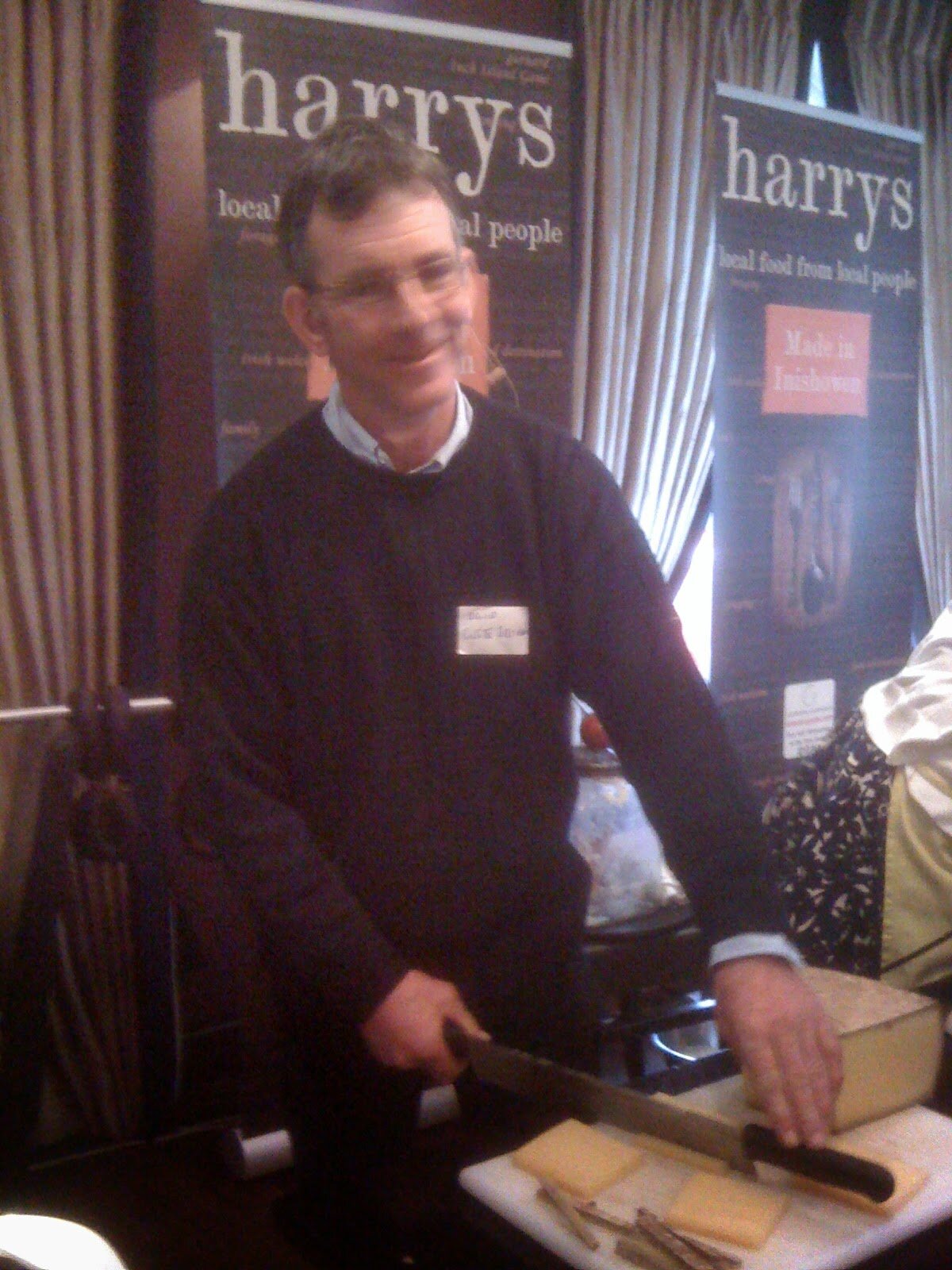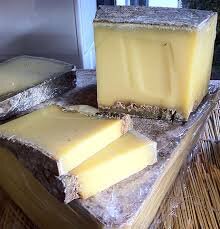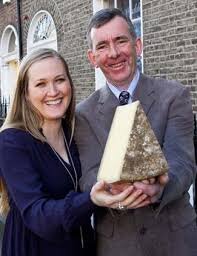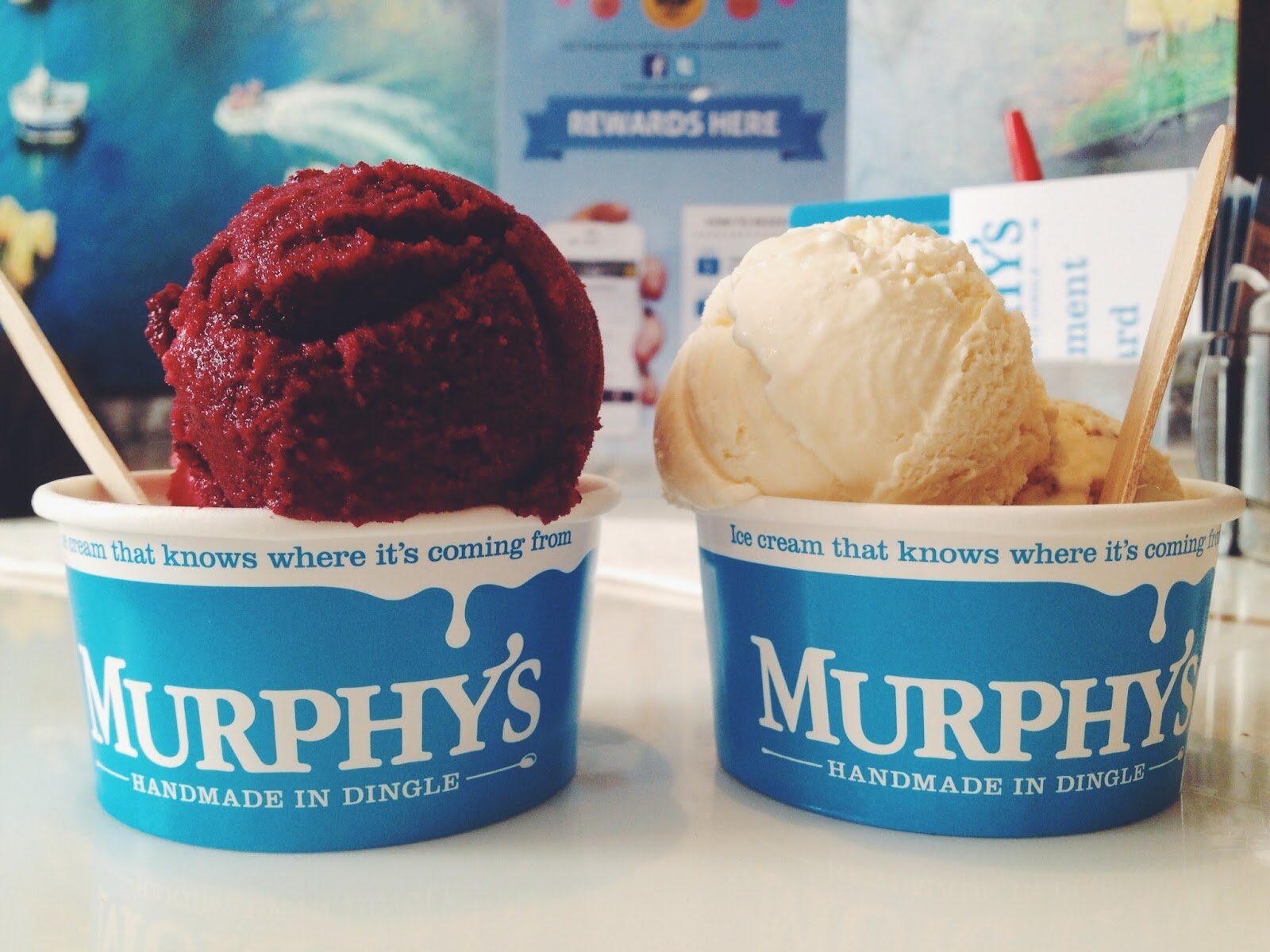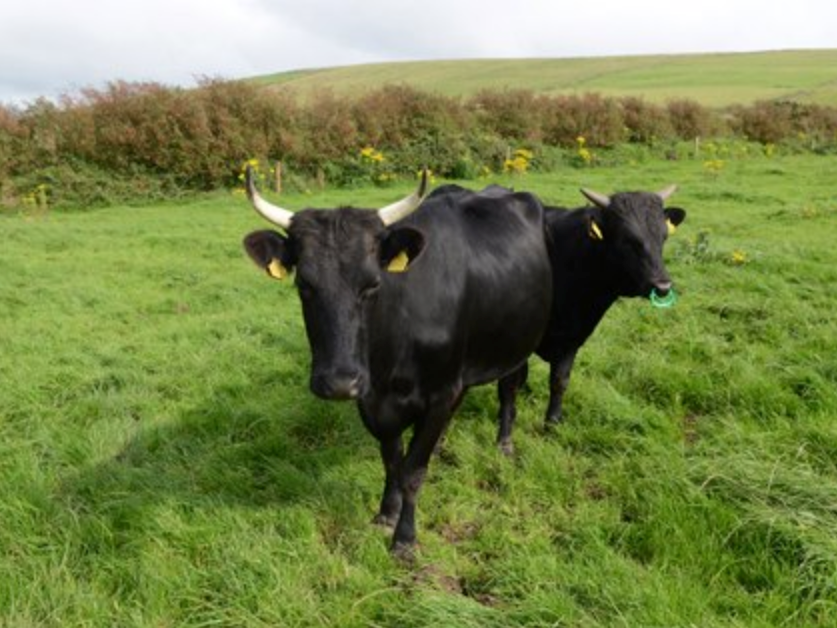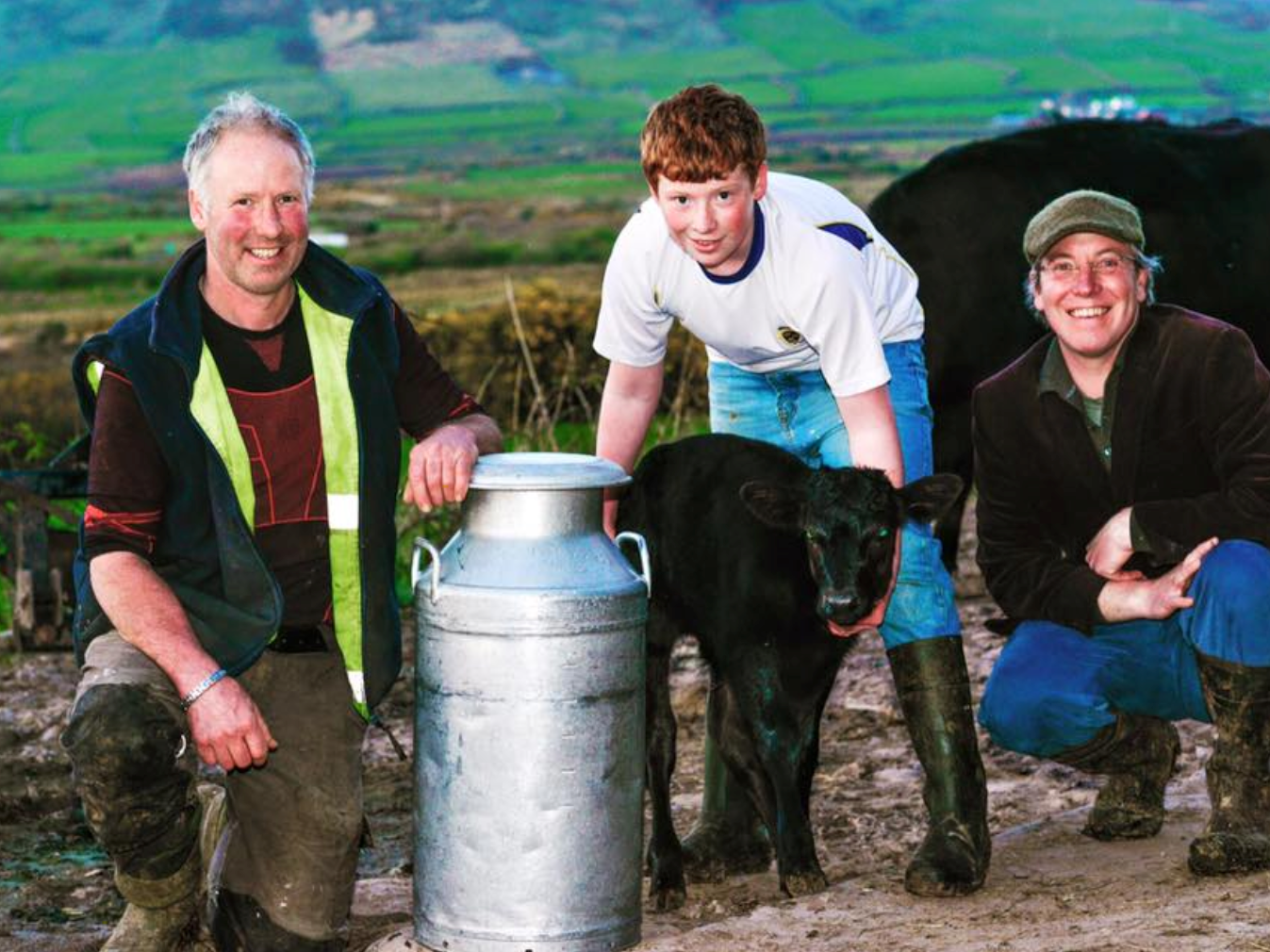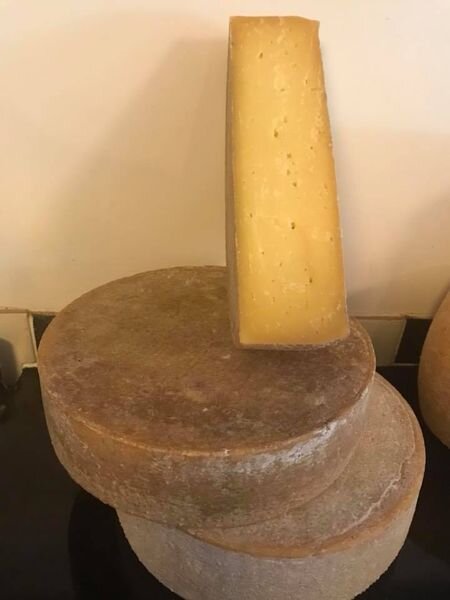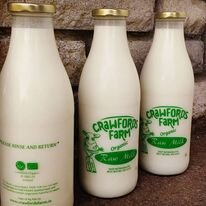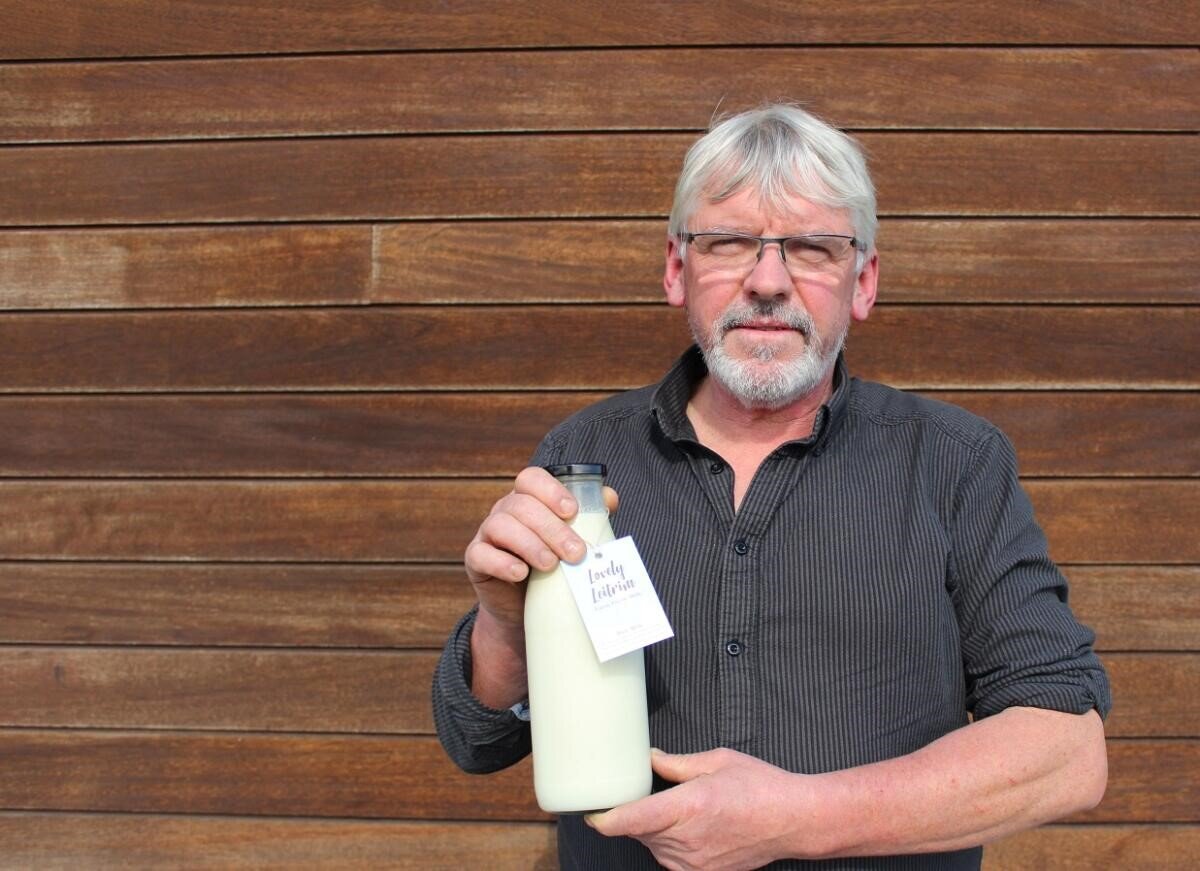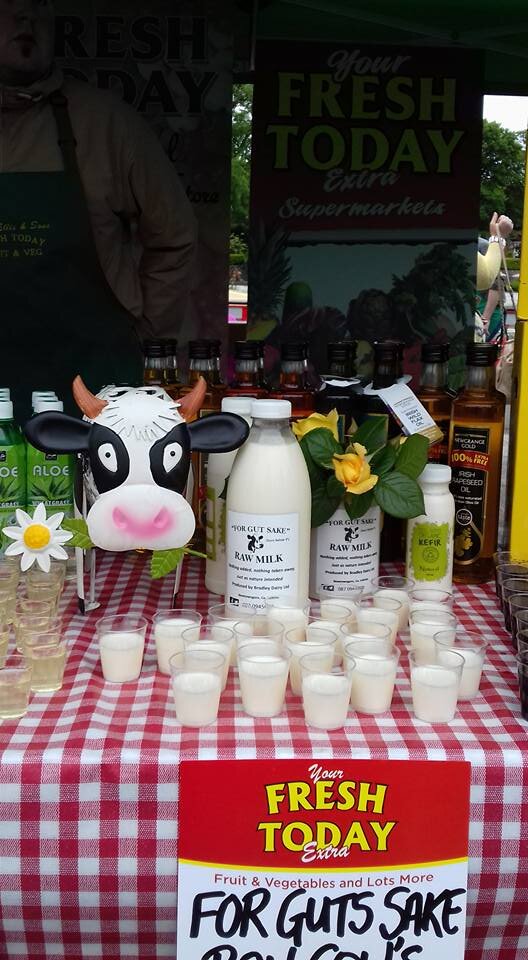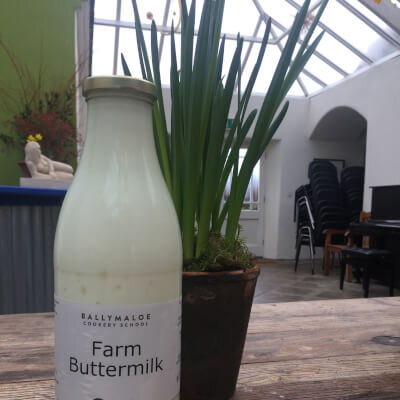Raw Milk - our personal journey
Every week we buy a liter of organic raw milk from Glean Bui farm near Ballyhaunis in Co. Mayo from the Knocknarea farm shop to make our weekly kefir. We also bought Patrick Bradleys “Lovely Leitrim” milk at the Sligo Farmers Market. It triggers a lot of memories. So here’s our personal experience with raw milk, which will hopefully contribute in a positive way to the ongoing debate about sustainable farming and the role of the cow (especially the dairy cow) in society. There is definitely renewed interest in raw milk and some Irish farmers respond to that. We hope more will follow!
Darina Allen on Raw Milk :“I was reared on raw milk from our Kerry house cow. I believe deeply in the importance of raw milk, not just for the health benefits but also for its flavour which can change from field to field depending on the diversity of the pasture that the cows are grazing.”
Raw Milk – a personal journey
One of my daily tasks on the way back from primary school was to collect fresh milk from the local dairy in the village, where the local milk was distributed and also made into quark, butter and “Schichtkaese”, a local speciality. The milk in our one litre stainless steel can was cooled with cold water in a stone basin outside the dairy. Often my mother would leave some of the milk to sour and in the Summer freshly baked sourdough dipped into cold sour milk was a dish I still vividly remember. Simplicity and pure taste! The year was 1958 in Untersteinbach in Germany. Gaby’s memories echo mine, living in Bornheim on the outskirts of Frankfurt her family was getting fresh, unpasteurised milk from the local shop. “I always tasted the cream on top of the bottle first, it was my favourite”, she remembers.
The old dairy in Untersteinbach on a visit in 2019
More than 20 years later and with a family and small children living in a city we often bought “Vorzugsmilch” in a glass bottle in our local healthfood store. “Vorzug” means preference or in this case premium quality. “Vorzugsmilch” by German law is untreated milk, raw milk, cooled to 4 Celsius straight after milking, bottled and with a use by date of 4 days, stored at 8 Celsius. Single origin milks produced on individual farms by special breeds grazing distinguished pastures. Famous were the ones in the Allgäu region of Germany. Again simplicity for a premium product. (https://www.milkandhealth.com/en/)
Cliffony Farmhouse Cheeses
Fast forward to 1985 when we started our cheesemaking adventure In Ireland with the milk of our two Kerry cows. With no electricity on the farm, the evening milk was cooled in cold water overnight and mixed with the warm milk from the morning milking and made into excellent cheese. Simple, pure, healthy and nutritious.
From 1985 to 2005 we produced raw milk cheeses from cows milk and goats milk. We had raw milk for our breakfast muesli, for making yoghurt and quark. A few local customers bought our fresh goats milk, especially for health reasons. Older people suffering from asthma bought it and families, where children suffered from eczema or didn’t do well on cows milk.
David Tiernan - a pioneering dairy farmer
Then in 2011 I had the great pleasure to meet the late David Tiernan at the Eurotoques Food Awards ceremony in Dublin. While I received a special award for The Organic Centre’s outstanding contribution to Irish food, David was presented an award for their Glebe Brethan raw milk cheeses. One of the lasting memories of that day was, that bottles of Mr Tiernan’s raw milk were removed from a photoshoot with the then Junior Minister for agriculture, the late Mr McEntee, because the Government wanted to introduce an outright ban on the sale of raw liquid milk. “Asked why he was presenting an award for a product that his Government is trying to ban, Mr McEntee said Mr Tiernan’s dairy produced a number of products apart from raw milk and he was “happy to present the award to David as a quality dairy farmer despite their differences in relation to the sale of raw milk”.( October 17th, 2011, The Irish Times)
First picture: The winners in 2011 from left: A Growing Pleasure, Naas, Co Kildare: for their micro-herbs and salads and free range, rare-breed pork, The Organic Centre for outstanding contribution to Irish Food through training and education, Gold River Farm, Aughrim, Co Wicklow: for their organic pork, Tiernan Family Farm, Dunleer, Co Louth: for their raw milk cheeses, Comeragh Mountain Lamb, Co Waterford: for their unique hill (The Minister is missing from this picture.) The other pics show David and his Glebe Brethen cheeses.
David didn’t cause any trouble at that photoshoot, I think convinced about the quality of his milk, he knew all along that he was on the right side of life, on the right side of the campaign for raw milk. In a subsequent interview for The Irish Times he said: “My life for the last 38 years has been simple, wake up and milk the cows”. Albeit on a very different scale, I can hugely relate to that feeling, as my life for about 20 years revolved around getting up in the morning to milk the goats. It was a very purposeful start of the day.
The story of Glebe Brethan is still a blue print for any budding cheese maker out there or any farmer, who wants to diversify: The right breed of animal and the best grass makes a great cheese.
Like many farmhouse producers David Tiernan started making cheese in order to add value to the exceptionally high quality of the milk they were producing. In the early nineties the family bought two Montbéliarde cows from the Jura region in eastern France renowned for the suitability of its milk to hard cheesemaking. David saw a gap in the market for an Irish Comté/ Gruyère style cheese and began experimenting with various recipes in 2003. The first commercial cheeses were produced in 2004 and took double gold at the International Food and Drink Exhibition in the RDS in 2005, the first of many Gold Medals (2006 Gold Medal at World Cheese Awards, ( 2010 Gold Medal at Irish Cheese Awards).
Sadly, David Tiernan passed away in February 2013 and the cheese is no longer being produced. However the last of this precious cheese was sold in the lead up to Christmas 2014 through Sheridans Cheesemongers, from La Rousse Foods (trade only) and directly from the Tiernan family farm. “If you’re looking for something special for your cheeseboard this Christmas, this is the year to give pride of place to one very special Irish cheese: the Comte-style Glebe Brethan Irish Artisan Cheese, made from the unpasteurised milk of a herd of Montbeliarde cows in Co Louth” wrote Zack Gallagher on October 27th 2014 (Irishfoodguide.ie)
Nirwana at Neantog - We have to reclaim the distinctiveness of milk!
“Just imagine coming down to breakfast in an Irish hotel, and on the menu there is a short list of various milks you can choose from to pour over your porridge. Would you like east Cork Jersey fresh unprocessed cow milk, 72 hours? Or Mayo Jersey cow milk, hand-milked, 72 hours? Or north Cork Friesian cow milk, 48 hours? Or Limerick organic single-daily-milk, 24 hours (yesterday it was grass!)? Of course, there should be some fresh goat’s milk there, too, just to make the paradox of choosing your milk even more deliciously complex.” (John McKenna in The Irish Times on May 13th, 2016)
I have often said that by using Holstein Friesian cows to produce as much milk as possible, we have lost the distinctiveness of milk. The composition of milk (water, solids, protein, fat and lactose) depends very much on the breed of cow and pasture grazed. After milking a Jersey cow you nearly have butter floating on top in your bucket, the butterfat content possibly as high as 5.2%. Butterfat in our Kerry cow milk on average was around 4.8%, compared with an average of 3.8% in Holstein Frisian milk. Protein in milk from cows grazing clover rich pastures in May and June is especially high. In Germany you can buy “Maimilch” (milk from May) cheese as a speciality!
The above quote from John McKenna is not some kind of Utopia. At one stage in our farming live you could have tasted in the Wieland kitchen milk from a Kerry cow, a Jersey cow and also goats milk from Saanen and/or Toggenburg goats. Even average or marginal land can produce a great milk if grazed by the most suitable animal. Local farmers often said “it’s hard to believe that your rushy fields produce such tasty cheese”. The secret were our Kerry cows, light on the land and very hardy. Later on our herd of cross- bred Saanen and Toggenburg goats were most happy at the rough stretches of land on the edges of our fields, where they gorged on hazel, willow, hawthorn and brambles.
It may take another little while until John McKenna’s imagination becomes reality, but there are already farmers who use distinctive breeds or Irish native breeds to produce distinctive milks and milk products. If quality becomes more important than quantity the Shorthorn, Kerry, Jersey, Dexter, Moilie and various cross breeds will survive and thrive. Here are a few examples of farming for the future!
“The best ice cream in the world” is made from Kerry Cow Milk!
Seán and Kieran Murphy started Murphy’s Ice Cream in Dingle in 2000 with the goal of making the best ice cream in the world. On their website they state: “There’s no real trick to what we do, we just take care and use the best of everything. Murphy’s ice cream uses the milk from the rare, indigenous breed of Kerry cow because the milk is so wonderful.”
Murphy’s ice cream makers in Dingle as well as Kells Bay Cheese get milk from Kerry cows milked by Colm Murphy in Lispole, Co, Kerry. Colm keeps 25 Kerry cows as part of his dairy herd of Friesians and Holstein cows.
Kells Bay Cheese is a hard cheese matured to 12 months and 24 months old. They also use seaweed as an ingredient and won a silver medal at Blas 2020 for their 24 month old cheese with Dillisk. They have run trials using both Friesian Milk and Kerry cow milk separately for their cheese recipes. When I spoke to Brian Lynch in research h for this article he tells me a very interesting story: ”I find our cheese made with milk from the Kerry cow, using the same recipe has a much greater depth in taste development, a deeper more buttery colour and a more creamier taste feel in comparison to cheese made with milk from Friesian/Holstein cows.”
Crawford farm - Where every Shorthorn cow is known by name
Owen and Mimi from Crawford farm Cloughjordan in Tipperary are another example for dedication and foresight: “We hold a strong belief that small farms play a vital role in carrying on food tradition in Ireland, and that a seasonal, natural, diverse and transparent style of farming not only brings about a lost connection between consumers and food producers, but also returns the flavour and nutrition to the products produced on the farm.”
Combining innovation with tradition - their small-scale milking parlour is the same one where the family cow was hand milked two generations ago -they produce organic raw milk, cream, buttermilk and traditional handmade butter as well as various meat products. They sell directly to their customers and a few independent retailers for 9-months each year.
What makes Crawford farm unique is their herd of native Irish Shorthorn cows. “Simply put, Irish Shorthorn cows are the best and the crowning gem of Crawford's Farm. We are a true micro-dairy with only a handful of milking cows. These ladies are exceptionally docile and good-natured as well as being a hardy breed well-suited to our small, intimate, organic system.”
Grazing on lush green pastures that are managed with holistic rotations during the natural production season for milking animals (Spring, Summer and Autumn) Owen and Mimi’s mission is to demonstrate to other farmers and consumers “that integrating humane animal husbandry with environmental stewardship to produce healthy foods for our communities is not only a viable, fulfilling possibility, but a necessity.”
“Lovely Leitrim” – Fresh Milk
“There is really no such thing as ‘raw milk’ - there’s just milk and pasteurised milk” says Patrick Bradley, who likes to call his milk, “pure milk.”
It was a personal health matter that inspired him to drink to diversify his enterprise in 2017. He had stomach ailments and after a ‘live blood analysis’ was advised to give up a few foodstuffs, including bread and dairy. As he loves his milk the practitioner suggested to switch to raw milk. “I dropped weight and my stomach became 100% in two weeks and raw milk is certainly part of it.” Hence the slogan “For Gut Sake” on the label.
Patrick’s milk is very creamy, full of flavour and has a really nice taste. What’s the secret I ask: “One major influence is probably the cross-bred cows and the once a day milking.” The herd is a cross of Frisian, Jersey, Ayrshire, Shorthorn, “and this year some Fleckvieh and some Kiwi”. Where does he see the benefits of cross breeding? “It has brought us incredible herd health and happy easy handled cows and a much better quality of milk with good butter fat and protein.
Ballymaloe Farm the Campaign For Raw Milk Ireland
In 1990, Tom Ferguson o Gubbeen Cheese in Schull, Co. Cork took Darina to see a beautiful herd of Kerry cows grazing on a hillside overlooking Roaring Water Bay in West Cork and it sparked the memory quoted at the beginning of this article and she resolved to get a Kerry, known for their delicious and nutritious milk, for her own family. In 2007 the farm building behind the cookery school was converted into a milking parlour. Now they milk a small herd of Jersey cows. “In our system the cows are milked once a day (in the morning), and the calf stays with the cow during the day. We separate them at night, so there is plenty of milk in the morning, and we find that this system works very well with ample milk for the calf and for our own needs at the school.” A certain quota of their daily supply of fresh unpasteurised milk is available for purchase from a refrigerated unit in their Garden Shop, in addition to homemade yoghurt, butter, buttermilk and cream.
At Ballymaloe Cookery School they are active proponents of the use of raw milk, with Darina at the forefront of the Campaign For Raw Milk Ireland. “When the Government attempted to ban the sale of raw milk in 2011, I battled to save the right of Irish people to choose.” Darina remembers.
Spearheading a campaign with other prominent figures in the Irish food community, including Kevin Sheridan, food writers like John McKenna and dairy farmers like the late David Tiernan, it led to the department of agriculture in 2015 to engage with producers and regulate the sale of raw milk in Ireland with industry guidelines being established in October 2018. http://rawmilkireland.com/wp-content/uploads/2020/08/Raw-Milk-Production-Guidelines-August-2020.pdf
Raw Milk Ireland also has the support of a wide number of chefs, consumers, food critics and members of the wider food community. To name but a few; Neven Maguire, Ross Lewis, Jp McMahon, Derry Clarke and Donal Skehan, all lent their support to protect our right of access to this most traditional of foodstuffs.
Live milk versus dead milk - The benefits of raw milk
There are many health benefits in using raw milk, which is nutritionally far superior than pasteurised and homogenised milk. I have a lot of anecdotal evidence from our customers over the years, who bought our milk and our cheeses often for health reasons. There are many studies available on the benefits of raw milk (http://rawmilkireland.com/nutrition/). Raw milk is live milk with the natural lactic acid bacteria still in it which help the human body to digest the milk, it also contains natural probiotics such as lactobacillus acidophilus. The fats are in their natural form and contain all the fat-soluble vitamins A, D, E and K. The milk contains Omega 3 and Omega 6, which has anti-carcinogenic properties, it also contains Vitamin C and B vitamins.
Consider what happens when you pasteurise the milk. Pasteurisation kills beneficial lactic acid bacteria, destroys enzymes, denatures fragile milk proteins, destroys Vit C and nearly 90% of B12 and B6, diminishes other Vitamins, locks up Calcium and generally makes it much harder to digest. In many cases allergies are associated with pasteurised milk, whereas raw milk often helps against allergies. Pasteurised milk is dead.
….and a final confession!
We don’t drink milk, not even raw milk. I like my coffee black and Gaby her tea untainted, but we love cheeses, especially raw milk cheeses and yoghurt (Gaby’s favourite is sheeps milk yoghurt) and we have a daily dose of raw milk kefir in the morning, often with muesli. So fermented milk is our thing and sour cream in Apfelkuchen (German apple tart) is an absolute necessity.


